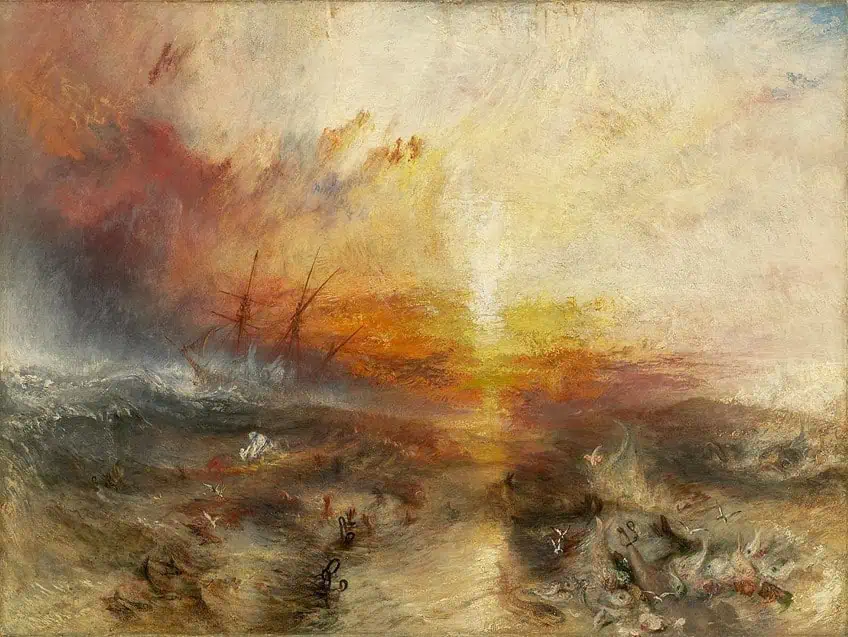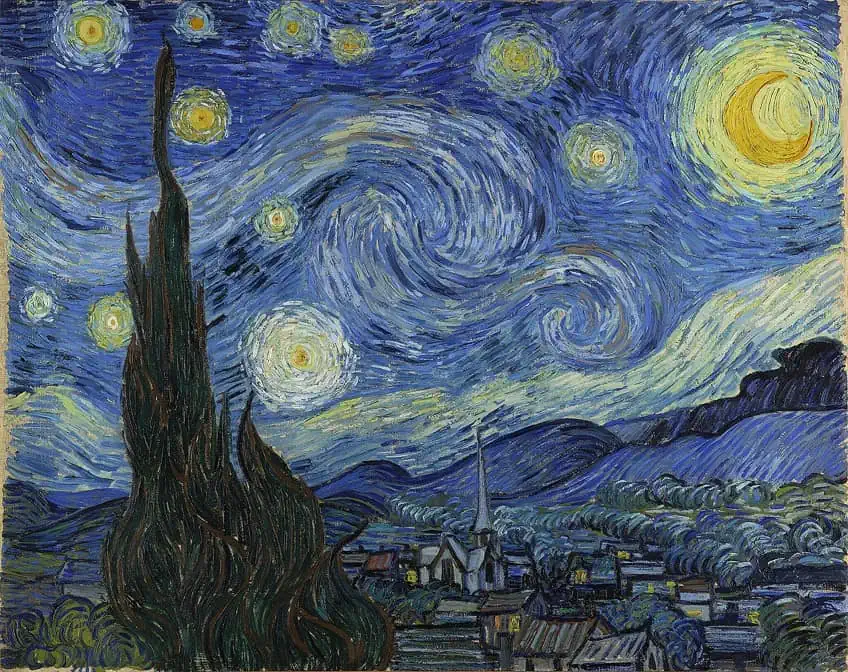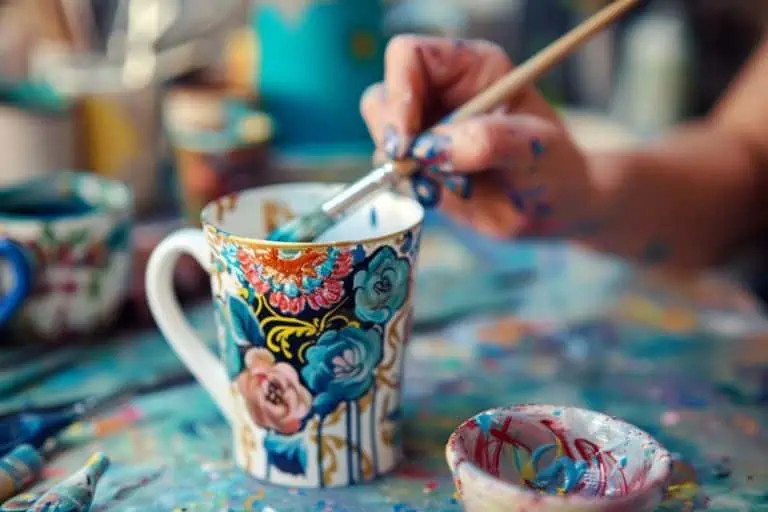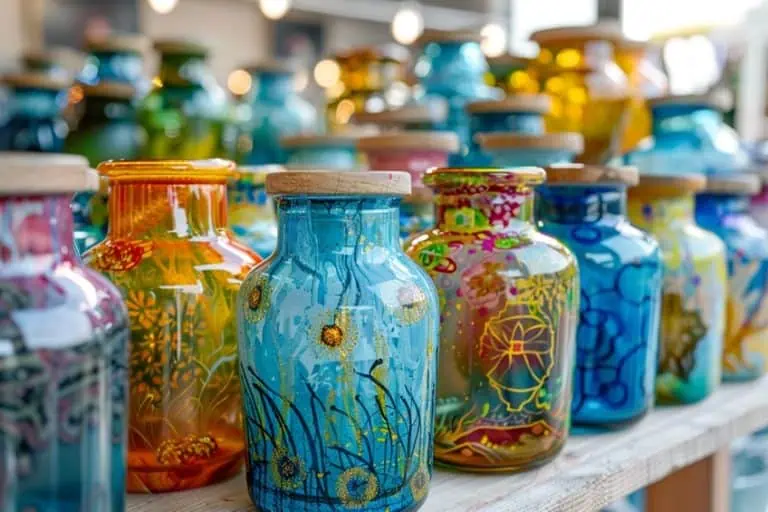Scumbling – Learn All About the Dry Brush Technique
This post may contain affiliate links. We may earn a small commission from purchases made through them, at no additional cost to you.
What is scumbling in art? This dry brush painting technique is a fairly common technique that has been used by a variety of famous painters. We will examine scumbled paint, the scumbling technique, and an example of a famous painting that features scumbling in this article. Let’s get started and have a look at scumbling!
Table of Contents
A Look at Scumbling in Art
Scumbling is an example of the dry brush painting techniques that can be used in traditional painting. The method, in very basic terms, involves the use of a dry brush that applies a thin layer of paint over an existing layer of paint. The reason for the scumbling technique is that it allows for heightened texture as the scumbling involves adding generally lighter colors on top of a darker existing layer of paint. In a technical sense, scumbling is not exactly the same as dry brush painting, as dry brush painting involves the use of quick and light strokes atop existing paint layers to sharpen certain textures.
Scumbling, on the other hand, also involves a dry brush but typically involves the use of circular strokes to create more atmospheric details, such as fog and clouds.
 Snow Storm (1842) by J.M.W. Turner; J. M. W. Turner, Public domain, via Wikimedia Commons
Snow Storm (1842) by J.M.W. Turner; J. M. W. Turner, Public domain, via Wikimedia Commons
However, they can both be termed forms of dry brush painting techniques. The name can cause confusion though. Scumbling is a fairly common painting method and one that has been used by many painters over the years. Near the end of this article, we will examine one of the most famous examples of the scumbling technique, but let’s first have a look at some of the features of scumbling in art.
The Features of Scumbling in Art
Scumbling entails the use of a lighter color applied over a darker layer of paint that has already been applied. As has been mentioned, to create this effect, a dry brush is required along with a light application of paint that is then applied to a layer, and the reason that this method is used is because scumbling creates a more layered look to the completed painting.
As each layer of paint is applied, the scumbling technique can be used to add texture to what is below.
 Dancers in Pink (c. 1876) by Edgar Degas; Edgar Degas, Public domain, via Wikimedia Commons
Dancers in Pink (c. 1876) by Edgar Degas; Edgar Degas, Public domain, via Wikimedia Commons
This technique is often used to produce a more luminous painted effect and is particularly useful when applied to painted objects such as clouds, fog, and mist. This allows these more ethereal elements to have a lighter feel to them. In addition to this, one of the features of scumbled paint is that it can ease transitions between colors. This stops the painting from appearing like a stark color set upon another stark color.
It can also be used to great effect in less realistic paintings to create a colorful and impressionistic flair.
How to Make Use of the Scumbling Technique
If you wish to make use of the scumbling technique, then it is best to follow a few basic steps. However, much like many techniques, it may be somewhat easy to learn but a difficult thing to master and something that should be practiced.
- Ensure that you have a dry brush. It is necessary to keep in mind that this is a dry brush painting technique. The desired effect will not be achieved if one were to instead make use of a wet brush.
- Ensure that parts of the painting are already painted in a darker paint. Scumbling makes use of a lighter pigment over a darker shade, and this allows for the more ethereal quality of scumbling to emerge. However, if one wanted to experiment, a darker color could be used over a lighter one, but that is not the traditional method.
- Apply a small quantity of paint to the ready brush. Scumbling requires thin layers of paint over existing paint, and as such, one does not want to apply too much and remove detail that has already been painted.
- Apply the paint to the canvas in a circular motion. Scumbling makes use of a circular paint stroke method that creates a broken effect. You do not want to completely cover the paint below and as you make these circular motions, you should adjust and alter the pressure with which you apply the paint. This will reduce repetitious effects.
- Repeat the scumbling technique. The method can be repeated until the desired result is achieved. Once it has been achieved, it is best to step away from the painting to ensure that the colors have led to the desired result. Additional applications may be necessary.
By making use of the scumbling technique, you too can create the more ethereal images that are associated with it. However, as has already been stated in different words: practice makes perfect. You will only master this technique if you make sure to use it and practice it.
 The Slave Ship (1840) by J.M.W. Turner; J. M. W. Turner, Public domain, via Wikimedia Commons
The Slave Ship (1840) by J.M.W. Turner; J. M. W. Turner, Public domain, via Wikimedia Commons
An Example of Scumbling: The Starry Night (1889) by Vincent van Gogh
| Artist | Vincent van Gogh (1853 – 1890) |
| Date | 1889 |
| Medium | Oil on canvas |
| Style | Post-Impressionism |
| Dimensions (cm) | 73.7 × 92.1 |
| Where It Is Housed | Museum of Modern Art, New York City, United States |
Vincent van Gogh is a painter known for making use of the scumbling technique in many of his paintings. This famous figure is one of the most important and influential figures in the history of Western art, and his famous oil-on-canvas painting The Starry Night is likely one of the most famous of his many stunning artworks.
The painting has been on display in the Museum of Modern Art in New York City since 1941 and has become one of the most recognizable paintings on the planet.
 The Starry Night (1889) by Vincent van Gogh; Vincent van Gogh, Public domain, via Wikimedia Commons
The Starry Night (1889) by Vincent van Gogh; Vincent van Gogh, Public domain, via Wikimedia Commons
The painting depicts a nighttime landscape, and it was painted from the east-facing window of the asylum where Vincent van Gogh resided during the time. He was in the asylum after the famous incident in which he mutilated his own left ear. The image also depicts a village that was entirely imaginary. The scumbled painting is particularly well-known for its use of symbolic representation, a distorted expression of reality (which was quite common in post-Impressionist paintings), and an extraordinarily vivid use of color. The painting makes use of scumbling to ensure a feeling of movement and emotion.
And so we come to the end of our examination of scumbling in art. We have discussed the method itself and how it is used, some pointers to take note of in case you too wish to make use of this technique, and an example of scumbling in the form of Vincent van Gogh’s Starry Night. There are many other stunning examples of the scumbling technique in the world of art, and if you want to find some of them, go and have a look and see what you can find!
Frequently Asked Questions
What Is Scumbling in Art?
Scumbling is a painting method that involves the application of a thin layer of lighter paint over a darker paint that has already been applied. The method requires the use of a dry brush. The application of layers atop other layers allows for the creation of a textured effect. The scumbling technique can also be used in drawing, but it is most commonly associated with painting.
Who Is the Most Famous Artist to Use Scumbling?
Some of the most famous artists who have made use of this technique include figures like Claude Monet and Rembrandt. However, the figure who is probably best known for making use of this painting method was Vincent van Gogh. His paintings have become some of the most notable examples of the scumbling method.
What Are Some of the Most Famous Paintings to Use Scumbling?
There are many famous examples of paintings that have made use of scumbled paint. Some of the most famous of them all include Vincent van Gogh’s Starry Night (1889), Claude Monet’s Water Lilies series (between 1897 and 1926), and J.M.W. Turner’s Snow Storm (1842). There are many other examples of paintings that have used this method, but these are some of the most notable examples.
In 2005, Charlene completed her wellness degrees in therapeutic aromatherapy and reflexology at the International School of Reflexology and Meridian Therapy. She worked for a company offering corporate wellness programs for several years before opening her own therapy practice. In 2015, she was asked by a digital marketer friend to join her company as a content creator, and it was here that she discovered her enthusiasm for writing. Since entering the world of content creation, she has gained a lot of experience over the years writing about various topics such as beauty, health, wellness, travel, crafting, and much more. Due to various circumstances, she had to give up her therapy practice and now works as a freelance writer. Since she is a very creative person and as a balance to writing likes to be active in various areas of art and crafts, the activity at acrylgiessen.com is perfect for her to contribute their knowledge and experience in various creative topics.
Learn more about Charlene Lewis and about us.







